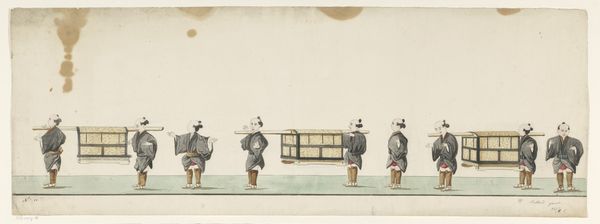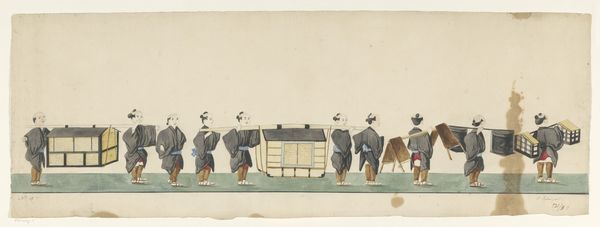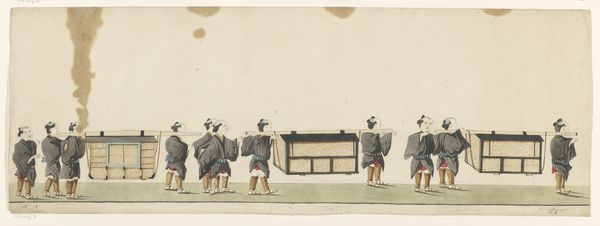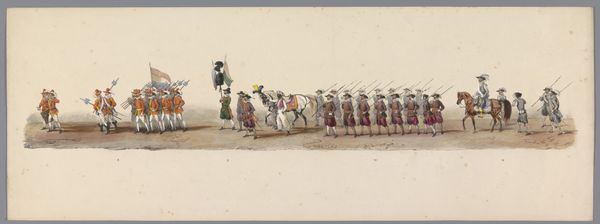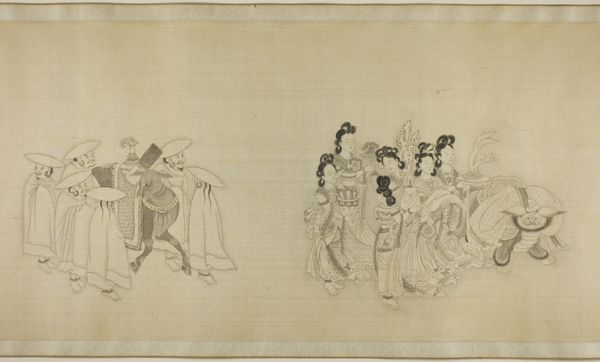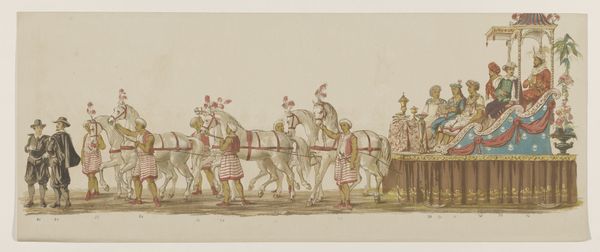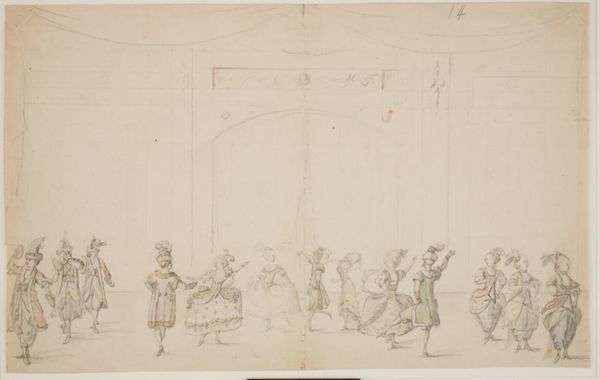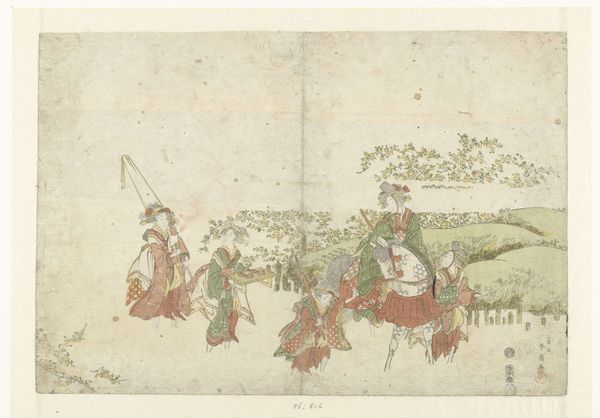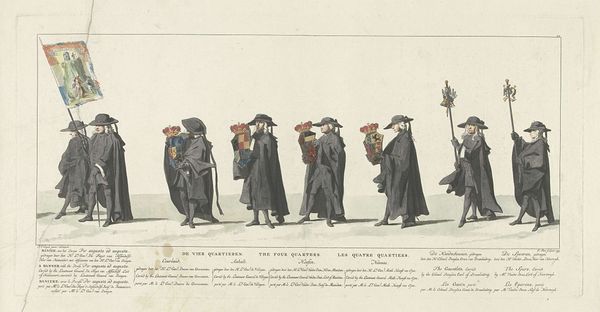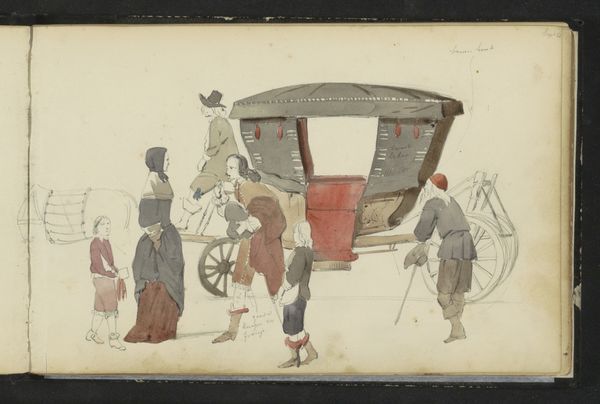
drawing, paper, ink
#
drawing
#
narrative-art
#
asian-art
#
ukiyo-e
#
figuration
#
paper
#
historical fashion
#
ink
#
line
#
genre-painting
#
history-painting
Dimensions: height 27.2 cm, width 76.3 cm
Copyright: Rijks Museum: Open Domain
Editor: This drawing, "Tekening," dates from around 1775 and is attributed to H. Rolland. It's an ink drawing on paper, showing a line of figures carrying what look like boxes on poles. There’s something almost…regimented about it. How would you interpret this piece? Curator: I see this as a commentary on labor, and specifically, on collective effort within a highly structured social system. The figures, seemingly uniform in dress and task, evoke questions about individual agency versus collective obligation. What might this scene tell us about the societal expectations and power dynamics of the time? Editor: It's interesting you mention power dynamics. I was so focused on the repetitive nature of the composition, but now I see how their matching outfits reduce individuality and the figures seem to function as parts of a bigger, potentially oppressive, machine. Is it specifically oppressive? Curator: Well, “oppressive” is a strong term, and requires more historical context. Are we romanticizing labor or recognizing its inherent limitations on freedom? What does their facial expressions convey, or conceal? Perhaps “obligatory” is a better starting point. The key is to unpack what this “obligation” signifies, and who benefits from their coordinated actions. How might this scene connect with colonial exploitation, thinking about artistic exchanges during this period? Editor: So you’re suggesting it could be interpreted through the lens of colonialism, and the demand for labor in colonized regions? Curator: Precisely. It prompts us to think critically about the circulation of images and ideas, and the potential role of art in either reinforcing or questioning such structures. This opens interesting lines of enquiry. Editor: That’s given me a lot to consider. I came in seeing just a simple scene, but now it’s filled with social commentary. Curator: Art’s power resides in its capacity to spark dialogue, inviting us to critically engage with history and its ongoing resonance in contemporary society.
Comments
No comments
Be the first to comment and join the conversation on the ultimate creative platform.
